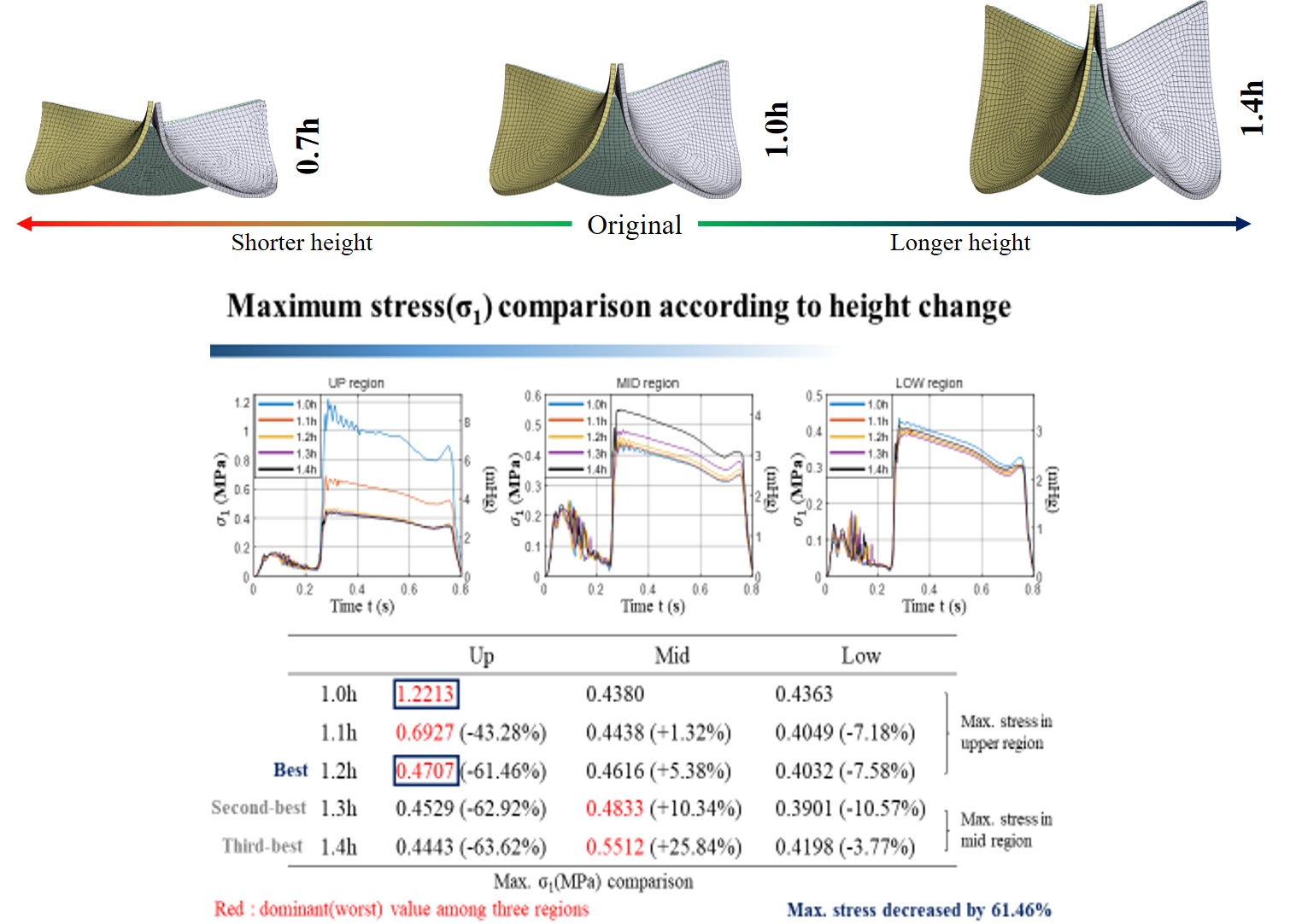초록접수 현황
| 20F-049 | 구연 발표 |
Computational analysis for the best optimal strut height inducing minimizing leaflet shear stress in aortic bioprosthesis
Seung Hyun Lee, Sak Lee, Jung-Hwan Kim, Hyun-Chel Joo, Young-Nam Youn, Kyung-Jong Yoo,
Division of Cardiovascular Surgery, Severance Cardiovascular Hospital, Yonsei University College of Medicine, Yonsei University Health System, Seoul, Republic of Korea
Purpose : Recently, many types of aortic bioprosthesis were invented and modified, and their design was focused to shortening of strut. For transcatheter aortic valve replacement (TAVR), it was inevitably designed to short height for packing to small delivery sheath. In surgical aortic valve replacement, there was a trend of shortening in strut height for next upcoming TAVR and easy knot making. We hypothesized that strut height might be strongly correlated with leaflet coaptation angle and leaflet shear stress, so analyzed optimal strut height by using computational simulation model.
Methods : We used 3 dimensional scanning for extraction of aortic bioprosthesis basic structure (Carpentier-Edwards PERIMOUNT) as a valve finite element (FE) model setup, and made a blood FE model setup for analyzing whole cardiac cycle sinus, aorta wall variant. Material characteristics of bioprosthesis (bovine pericardium) was set and hyperelastic material fitting was done for conformance verification. Basic prototype height (scanning model) was set as a 1h and we made variants from 0.5 h to 1.5h model.
Results : From each different height model, we analyzed overall shear stress during cardiac cycle and gain the cut value of optimal height. From the Maximum stress(σ1) comparison according to height change, 1.2h model showed best result.
Conclusion : Strut height is very important factor for determining shear stress of bioprosthesis leaflet, but recent trend of lowering height has not been verified until now. From our simulation test, higher strut might be a helpful to reduce a shear stress of leaflet and it can induce better longevity of aortic bioprosthesis.
Methods : We used 3 dimensional scanning for extraction of aortic bioprosthesis basic structure (Carpentier-Edwards PERIMOUNT) as a valve finite element (FE) model setup, and made a blood FE model setup for analyzing whole cardiac cycle sinus, aorta wall variant. Material characteristics of bioprosthesis (bovine pericardium) was set and hyperelastic material fitting was done for conformance verification. Basic prototype height (scanning model) was set as a 1h and we made variants from 0.5 h to 1.5h model.
Results : From each different height model, we analyzed overall shear stress during cardiac cycle and gain the cut value of optimal height. From the Maximum stress(σ1) comparison according to height change, 1.2h model showed best result.
Conclusion : Strut height is very important factor for determining shear stress of bioprosthesis leaflet, but recent trend of lowering height has not been verified until now. From our simulation test, higher strut might be a helpful to reduce a shear stress of leaflet and it can induce better longevity of aortic bioprosthesis.

책임저자: SEUNG HYUN LEE
Division of Cardiovascular Surgery, Severance Cardiovascular Hospital, Yonsei University College of Medicine, Yonsei University Health System, Seoul, Republic of Korea
발표자: SEUNG HYUN LEE, E-mail : henry75@yuhs.ac


